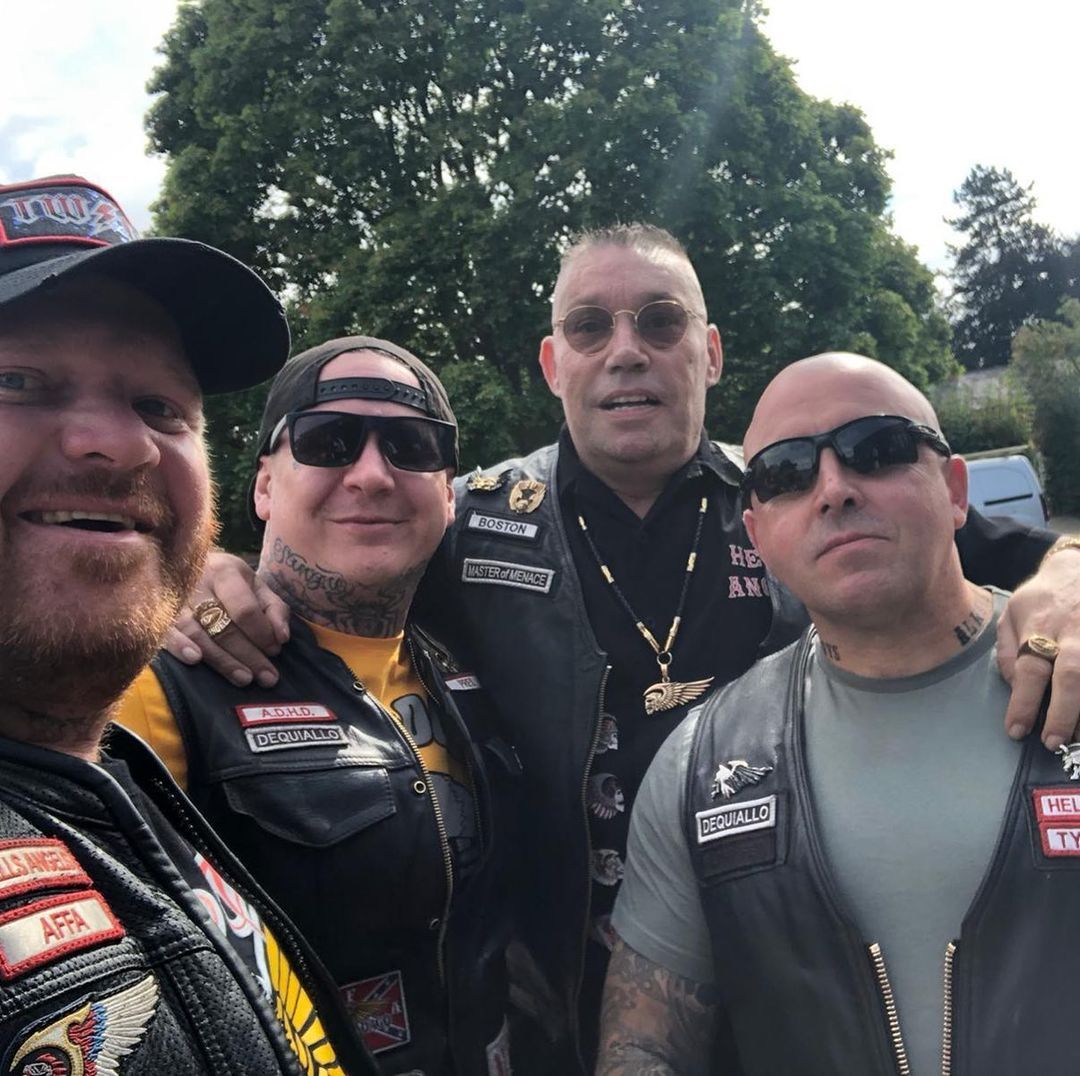Hells Angels Motorcycle Club: A Sociological Analysis

Table of Contents
The Structure and Hierarchy of the Hells Angels Motorcycle Club
The Hells Angels Motorcycle Club operates through a hierarchical structure, characterized by a complex network of chapters and a defined chain of command. This organizational structure, while seemingly informal, allows for efficient communication and the implementation of club policies. Understanding the Hells Angels hierarchy is crucial to comprehending its operations and longevity.
- Chapter Organization: The club is divided into geographically dispersed chapters, with some chapters considered "mother chapters" holding significant influence. This decentralized structure allows for local autonomy while maintaining overall organizational cohesion.
- Key Roles: Each chapter features specific roles, including the President (the ultimate authority within a chapter), Vice President, Sergeant-at-Arms (responsible for enforcing club rules), Treasurer, and other officers. The responsibilities of these positions are clearly defined, contributing to the club's internal order.
- Membership and Initiation: Membership is highly selective and involves a rigorous initiation process. This process fosters loyalty and reinforces the unique identity of HAMC members. The internal power dynamics within chapters can be complex, often leading to internal conflicts and power struggles.
- Interconnectedness: While chapters operate independently to a degree, there is significant interconnectedness between them, particularly concerning significant decisions and overall club strategy. This interconnectedness allows for resource sharing and coordinated actions. The geographical distribution of Hells Angels chapters reflects strategic considerations related to criminal activities and resource control.
The Subculture and Identity of Hells Angels Members
The Hells Angels Motorcycle Club fosters a unique and highly recognizable subculture. This subculture, deeply ingrained in the club's identity, is a critical factor in understanding member motivations and behaviors. Analyzing the Hells Angels subculture illuminates the powerful social bonds and shared identity that hold the organization together.
- Brotherhood and Loyalty: The core values of the HAMC emphasize brotherhood, loyalty, and a defiant rebellion against mainstream society. These values are reinforced through rituals, shared experiences, and the enforcement of strict codes of conduct.
- Symbols and Attire: The use of specific insignia, tattoos, and clothing acts as powerful markers of identity. These symbols represent a shared history and a sense of belonging to a distinct group, reinforcing group cohesion and solidarity. The iconic "Death Head" logo is a prime example of this visual identity.
- Outlaw Biker Culture: The Hells Angels are deeply rooted in the broader outlaw motorcycle gang culture. This culture, characterized by a rejection of societal norms and a celebration of freedom and independence, provides the ideological bedrock for the club's existence.
- Psychological Factors: Understanding the psychological factors that attract individuals to the Hells Angels is crucial. These factors may include a desire for belonging, a sense of community, a rejection of conventional society, or a thrill-seeking personality.
The Hells Angels Motorcycle Club and Criminal Activity
The Hells Angels Motorcycle Club has a long and well-documented history of involvement in criminal activities. While it's crucial to avoid generalizations and acknowledge the complexities of the situation, the club's involvement in illicit activities significantly impacts its social perception and legal standing. Analyzing the Hells Angels crime history necessitates a careful examination of evidence and a recognition of the nuances of organized crime.
- Range of Criminal Activities: The HAMC has been implicated in a wide array of criminal activities, including drug trafficking, extortion, money laundering, and violence. The scale and nature of these activities vary significantly depending on the specific chapter and its location.
- Structure and Criminal Operations: The hierarchical structure of the Hells Angels Motorcycle Club facilitates criminal activities. The club's organizational capacity enables coordinated efforts in criminal enterprises, making prosecution challenging.
- Law Enforcement Response: Law enforcement agencies worldwide face significant challenges in investigating and prosecuting Hells Angels members due to the club's secretive nature, strict code of silence, and complex organizational structure. Hells Angels investigations are often long-term and require substantial resources.
- Public Perception: The club's image is heavily influenced by media portrayals and perceptions of its criminal activities. This negative image further complicates attempts at rehabilitation and integration into mainstream society. The ongoing debate surrounding the club's public image underlines the complexities of understanding its societal impact.
The Sociological Impact of the Hells Angels Motorcycle Club
The Hells Angels Motorcycle Club's societal impact extends far beyond its criminal activities. The club's influence on popular culture, the criminal justice system, and public perceptions shapes its broader social footprint. Understanding this influence requires examining the diverse perspectives of stakeholders and recognizing the long-term consequences of the club's actions.
- Influence on Popular Culture: The HAMC has been a subject of numerous books, films, and documentaries, shaping its image and fueling public fascination. These portrayals, however, often fail to capture the nuances and complexities of the club's reality.
- Impact on Law Enforcement: The club's actions put a significant strain on law enforcement resources, requiring extensive investigations and prosecutions. This impact extends beyond individual chapters to the broader criminal justice system.
- Socio-economic Factors: Analyzing the socio-economic factors contributing to the club's existence is crucial. These factors might include poverty, lack of opportunity, and social exclusion in certain communities.
- Stakeholder Perspectives: To gain a comprehensive understanding of the Hells Angels Motorcycle Club's impact, it's essential to consider the perspectives of various stakeholders, including law enforcement officials, community members, former members, and academics.
Conclusion
Analyzing the Hells Angels Motorcycle Club from a sociological perspective reveals a complex organization with a deeply ingrained subculture, a hierarchical structure facilitating criminal activities, and a significant impact on society. Understanding the Hells Angels Motorcycle Club requires moving beyond simplistic generalizations and acknowledging the multifaceted nature of its influence. We need to consider the historical context, the socio-economic factors, and the diverse perspectives of those affected by the club's activities. To further your understanding of the Hells Angels Motorcycle Club, we encourage continued research and critical engagement with the various perspectives surrounding this fascinating and controversial organization. Continue analyzing the Hells Angels Motorcycle Club and its lasting impact to contribute to a more nuanced and informed understanding of this complex social phenomenon.

Featured Posts
-
 Nippon U S Steel Deal Trump Administrations Approval And Market Impact
May 26, 2025
Nippon U S Steel Deal Trump Administrations Approval And Market Impact
May 26, 2025 -
 Analyzing The Tensions Between Claire Williams And George Russell
May 26, 2025
Analyzing The Tensions Between Claire Williams And George Russell
May 26, 2025 -
 Coco Gauff Reaches Italian Open Third Round
May 26, 2025
Coco Gauff Reaches Italian Open Third Round
May 26, 2025 -
 Thierry Ardisson Et Laurent Baffie Con Et Machiste Decryptage D Une Relation Conflictuelle
May 26, 2025
Thierry Ardisson Et Laurent Baffie Con Et Machiste Decryptage D Une Relation Conflictuelle
May 26, 2025 -
 Thierry Ardisson Et Laurent Baffie Clash De Titans Lui Peut Etre Moi Non
May 26, 2025
Thierry Ardisson Et Laurent Baffie Clash De Titans Lui Peut Etre Moi Non
May 26, 2025
